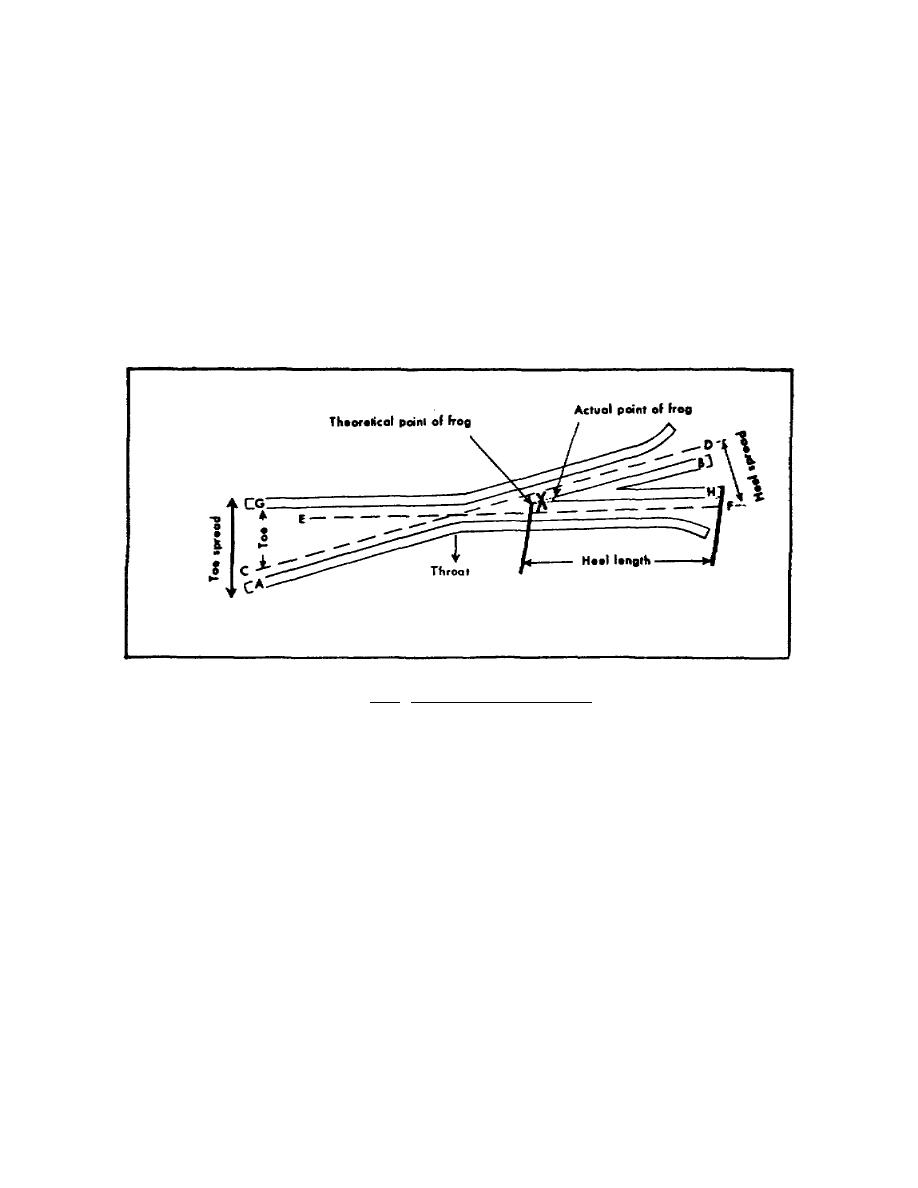
may be used on light traffic lines and in relatively unimportant yards, or when other types are not on hand.
2.6.
PATH THROUGH A FROG
The path through a frog that the train wheels take can be followed more easily if you refer to figure 2.11 as you
read the remainder of the paragraph. If a locomotive were moving from left to right and were to be diverted to
the left, the wheels moving over the left-hand rail would roll on it just as if it were ordinary track. The wheels
moving over the right-hand rail would pass over the frog. The flanges would follow path C-D, while the treads
would move along path A-B. Note that the wheels are unsupported as they pass the junction where the dotted
line E-F crosses the dotted line C-D, at the throat of the frog. The gap is necessary for the movement of a train
not being diverted by the switch, because it permits the flanges of the left-hand wheels to cross the rail A-B as it
proceeds along path G-H. Any train passing through the turnout, regardless of direction, has the wheels on one
or the other side pass through the frog. Wheels passing over the frog from left to right deliver a blow to the point
of frog at X.
Figure 2.11. Movement Through a Frog.
2.7.
FACING- AND TRAILING-POINT MOVEMENTS
Facing and trailing-point movements are the terms describing the prevailing moves through a turnout.
They are designated in part by the direction from which the train is traveling when it reaches the frog. A train
entering a turnout so that it faces the switch points and passes over them before it comes to the frog is said to be
making a facing-point move. If the prevailing movement is facing point, the
39



 Previous Page
Previous Page
